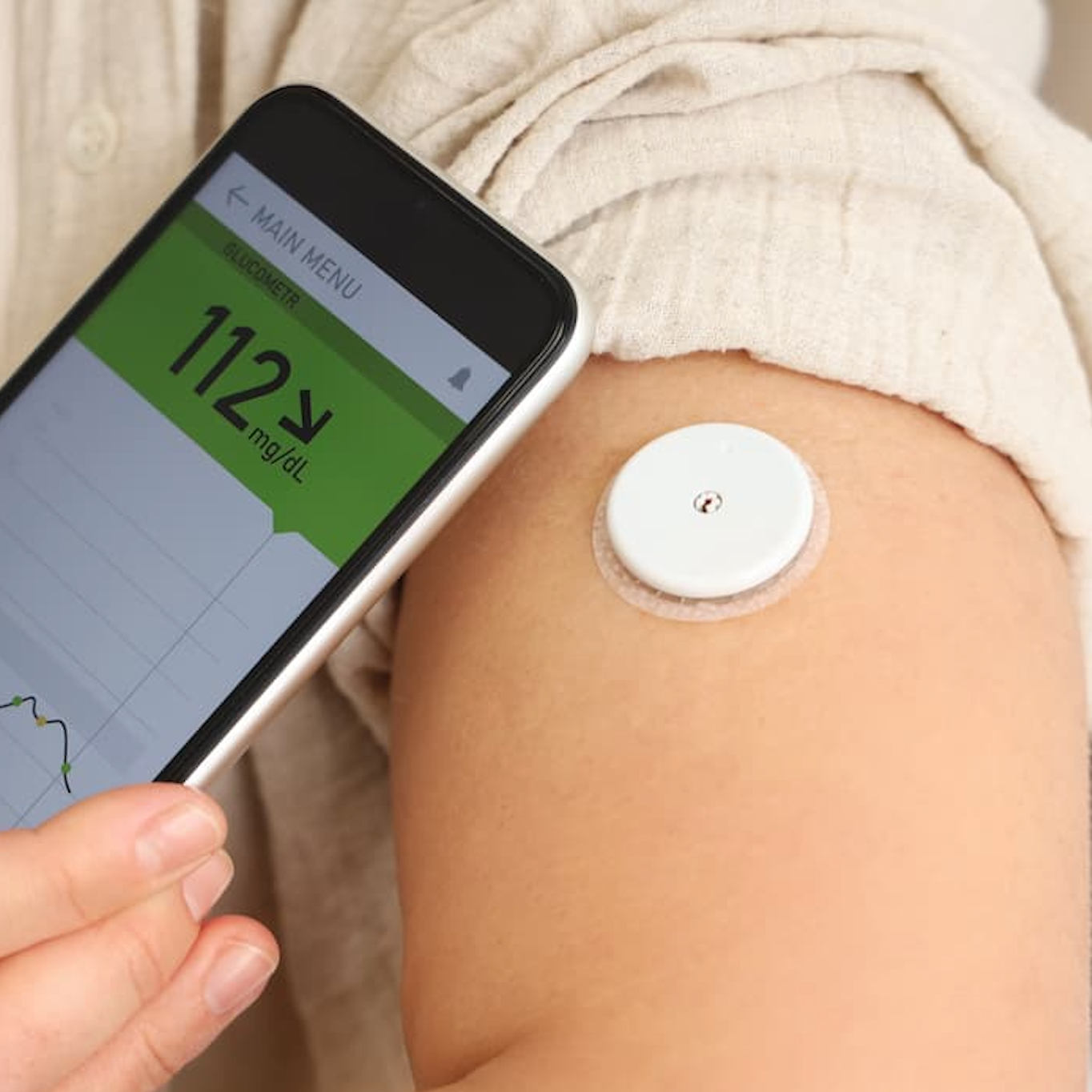Tracking Blood Sugar: When CGMs Work Best (and When They Don’t)
While CGMs are powerful tools for diabetes, they may not add much value for people with normal blood sugar levels.
By
Lana Pine
| Published on October 2, 2025
4 min read
Credit: Adobe Stock/Pixel-Shot

Continuous glucose monitors (CGMs) are small wearable devices that track blood sugar in real time, giving people more detailed insights than the traditional hemoglobin A1c (HbA1c) test, which only shows average blood sugar levels over about three months. A recent study explored how CGM results compare with HbA1c in people with Type 2 diabetes, prediabetes and normal blood sugar (normoglycemia). The team found that the benefits of these monitors greatly vary between groups.
In 2024, the U.S. Food and Drug Administration (FDA) approved the first over-the-counter CGM intended for people with and without diabetes. With the decision came the need for both patients and doctors alike to understand common CGM metrics in relation to HbA1c. While many studies have looked at these data for people with diabetes, less research has been done evaluating this correlation among those with prediabetes or normoglycemia.
“As a physician, it is important to me to be able to advise all patients who may increasingly use these monitors,” said lead investigator Jorge A. Rodriguez, M.D., of Mass General Brigham’s Department of Medicine and the Division of General Internal Medicine and Primary Care at Brigham and Women’s Hospital. “Clarifying the relationship between HbA1c and CGM metrics is essential for guiding clinical interpretation of CGM metrics, as the use expands to populations with prediabetes and normoglycemia.”
Investigators included 972 adults aged 40 years and older from the Artificial Intelligence Ready and Exploratory Atlas for Diabetes Insights (AI-READI) cohort. Among the group, 421 had Type 2 diabetes, 319 had prediabetes and 232 had normal blood sugar. Compared with the diabetes groups, individuals with normoglycemia were younger, had lower HbA1c and had lower body mass index.
What the Findings Revealed:
- In people with Type 2 diabetes: CGM data and HbA1c matched up strongly. The strongest link was with average blood glucose levels, meaning CGMs can be a reliable tool for monitoring alongside HbA1c.
- In people with prediabetes: The connection between CGM readings and HbA1c was weaker. Average glucose still showed some association, but not as strongly as in Type 2 diabetes.
- In people with normal blood sugar: CGM data didn’t line up very well with HbA1c. For example, time in range (the amount of time glucose stays in the healthy zone) didn’t significantly relate to HbA1c.
What This Means for Patients:
The study showed that for people with Type 2 diabetes, CGMs can be a very helpful tool to track and manage blood sugar alongside HbA1c. For people with prediabetes, CGMs may also provide some useful insights, but they don’t replace HbA1c testing. However, for people with normal blood sugar, CGMs may not add much value for monitoring risk since the data don’t align strongly with HbA1c.
The team noted limitations including that there is no universal standard for how CGM data should be included in studies, although they followed expert guidance. They also did not account for other health conditions — such as kidney disease or certain blood disorders — that can affect HbA1c levels regardless of blood sugar. In addition, the people who chose to participate may not represent everyone, which limits how widely the findings can be applied. The study only used one type of CGM device, so the results may not apply to other devices that measure blood sugar differently. Finally, this was a cross-sectional study (a snapshot in time), so future research is needed to see how CGM data and HbA1c relate over the long term.
“Our study reaffirms that CGMs are great tools for people with diabetes, but their numbers don’t reflect the standard HbA1c test for people with prediabetes or normal blood sugar,” said Rodriguez. “Especially for those without diabetes, CGM data is not a substitute for HbA1c, which assesses how well the body controls blood sugar over multiple months.”

